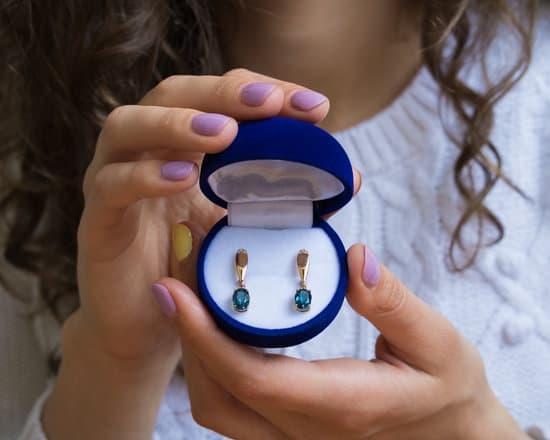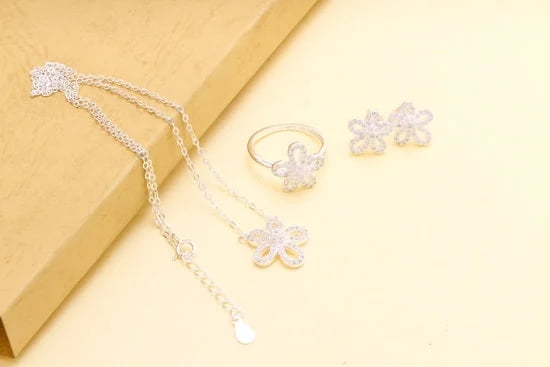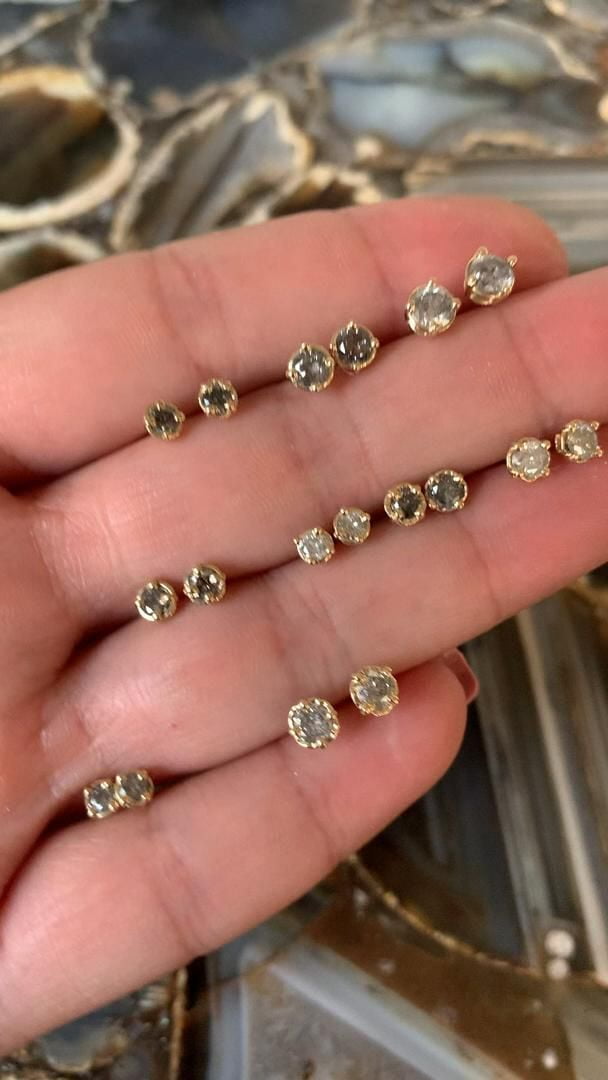What is the markup on gold jewelry? This question is often asked by consumers who are looking to purchase gold jewelry, as they want to understand the pricing and determine if they are getting a fair deal.
In this article, we will explore the basics of gold jewelry markup, factors affecting markup, retail and wholesale processes, the role of design and branding, the difference between fine and fashion gold jewelry markup, as well as tips for consumers when buying gold jewelry. Additionally, we will also discuss the future of gold jewelry markup in the market.
Gold jewelry is a popular choice for many people due to its timeless beauty and value. However, understanding how its pricing is determined can be complex. The basics of gold jewelry markup involve various factors that influence its retail and wholesale prices. Factors such as market demand, production costs, design intricacy, and brand reputation all play a role in determining the final markup on gold jewelry.
One important aspect that affects the pricing of gold jewelry is the retail markup process. Retailers often add a certain percentage to cover their overhead costs, such as rent, utilities, labor expenses, and profit margin. Understanding this process can give consumers insight into why there may be differences in pricing among different stores selling similar pieces of gold jewelry.
Factors Affecting Markup on Gold Jewelry
Quality of the Gold
The quality of the gold used in jewelry significantly affects its markup. Pure gold, or 24 karat gold, is more expensive and therefore carries a higher markup compared to lower karat options. In addition, the purity of the gold can also impact its durability and longevity, further influencing its retail price.
Market Demand
The demand for gold jewelry in the market can also play a role in determining its markup. When there is high consumer demand for certain styles or designs, retailers may increase the markup on these items to capitalize on their popularity. Conversely, when there is less demand for certain types of gold jewelry, retailers may lower their markups to incentivize sales.
Economic Factors
Economic conditions such as inflation, interest rates, and currency strength can impact the markup on gold jewelry. During periods of economic instability or high inflation, retailers may raise their markups to offset increased costs or compensate for potential future losses. Conversely, during times of economic growth and stability, markups on gold jewelry may be more competitive as retailers seek to attract buyers with favorable pricing.
Understanding these factors can provide insight into what affects the markup on gold jewelry and empower consumers to make informed purchasing decisions. By considering these variables and conducting thorough research before making a purchase, consumers can ensure that they are getting the best value for their investment in gold jewelry.
Understanding the Retail Markup Process
When it comes to understanding the retail markup process for gold jewelry, there are several key factors to consider. Retailers typically apply a markup on gold jewelry in order to cover their costs and make a profit. Markup refers to the difference between the cost of acquiring the jewelry and the price at which it is sold to customers. Here are some specific aspects to consider about the retail markup process for gold jewelry:
Factors Affecting Retail Markup:
- Wholesale Cost: Retailers purchase gold jewelry from wholesalers, who set their prices based on factors such as current market value of gold, craftsmanship, and additional materials used in the jewelry.
- Operating Expenses: Retailers also factor in their operating expenses such as rent, utilities, payroll, and other overhead costs when determining the markup on gold jewelry.
- Market Demand: The demand for certain types of gold jewelry can affect the retail markup. Higher demand items may have a higher markup compared to items with lower demand.
Markup Calculation:
Retailers calculate their markup percentage by dividing the difference between the selling price and wholesale cost by the wholesale cost. This calculation helps them determine how much they need to mark up each piece of gold jewelry in order to achieve their desired profit margin.
Consumer Tips:
As a consumer, it’s important to be aware of what influences the retail markup on gold jewelry. Researching market prices and comparing them across different retailers can help you make an informed purchasing decision. Additionally, negotiating with retailers or considering purchasing directly from wholesalers can potentially help you get a better deal on gold jewelry.
Exploring Wholesale Markup for Gold Jewelry
When it comes to the wholesale markup for gold jewelry, there are several factors that come into play. Wholesale prices are typically lower than retail prices, as they are intended for businesses that will then sell the jewelry to consumers. The markup at the wholesale level can vary depending on a number of different factors.
Factors Affecting Wholesale Markup
One of the key factors that affects the wholesale markup on gold jewelry is the current market price of gold. Fluctuations in the price of gold can directly impact the wholesale cost of gold jewelry. Additionally, the quality and craftsmanship of the jewelry also play a role in determining its wholesale markup. Higher quality pieces with intricate designs may have a higher wholesale price and therefore a different markup compared to simpler, more mass-produced items.
Understanding Wholesale Pricing Process
Wholesale pricing for gold jewelry is typically determined by negotiating with suppliers or manufacturers. The purchasing volume, payment terms, and long-term relationship with the supplier can all influence the final wholesales price and subsequent markup. For retailers looking to obtain gold jewelry at a wholesale price, it’s important to consider these factors and negotiate effectively to ensure a competitive markup for their business.
Impact on Retail Markup
The wholesale markup on gold jewelry ultimately has an impact on the retail pricing as well. Retailers must take into account their own overhead costs such as rent, utilities, and staff wages when determining the final retail markup. By understanding how wholesale pricing and markup works, retailers can ensure that they are setting fair retail prices for consumers while still maintaining profits.
The Role of Design and Branding in Gold Jewelry Markup
Factors Affecting Design and Branding Markup:
1. Brand Reputation: Well-established brands with a reputation for high-quality and luxury goods often command higher markups on their gold jewelry. The brand name itself becomes a status symbol for the wearer, driving up the perceived value of the piece.
2. Design Complexity: The intricacy and complexity of the design play a significant role in determining the markup on gold jewelry. More elaborate designs require skilled craftsmanship and labor, which contribute to higher production costs and ultimately result in a higher retail markup.
3. Exclusivity: Limited edition or designer collaborations often come with a higher price tag due to their exclusivity, rarity, and unique design elements. This exclusivity leads to higher demand and allows for greater flexibility in setting retail prices.
Understanding how design and branding influence the markup on gold jewelry can help consumers make more informed purchasing decisions based on their preferences, budget, and desired level of exclusivity. When shopping for gold jewelry, consumers should consider the following tips:
Tips for Consumers:
– Research different brands and designers to understand their reputations, styles, and typical markups on gold jewelry.
– Consider whether you prioritize brand recognition or prefer unique designs from emerging designers or smaller brands.
– Be mindful that elaborate designs may come with a premium cost due to the intricate craftsmanship involved.
– Look for sales events or special promotions when considering purchasing branded or designer gold jewelry pieces.
Ultimately, understanding how design and branding contribute to the markup on gold jewelry is essential for consumers looking to make informed purchasing decisions based on their personal preferences and budget constraints.
The Difference Between Fine and Fashion Gold Jewelry Markup
When it comes to the markup on gold jewelry, understanding the difference between fine and fashion gold jewelry is crucial. Fine gold jewelry, typically made from 18K or 14K gold, is of higher quality and often includes precious gemstones, leading to a higher markup. On the other hand, fashion gold jewelry is usually made from lower quality materials and does not contain precious gemstones, resulting in a lower markup.
In general, the markup on fine gold jewelry can range anywhere from 300% to 600%, depending on the retailer and specific piece. This high markup is justified by the quality of materials used and craftsmanship involved in creating fine gold jewelry pieces. Fashion gold jewelry, however, tends to have a lower markup, typically falling within the range of 150% to 300%.
It’s important for consumers to understand this distinction when shopping for gold jewelry as it directly impacts pricing. Additionally, brand reputation also plays a significant role in determining the markup on both fine and fashion gold jewelry. High-end luxury brands often command higher markups due to their brand value and prestige associated with their products.
| Gold Jewelry Type | Markup Range |
|---|---|
| Fine Gold Jewelry | 300% – 600% |
| Fashion Gold Jewelry | 150% – 300% |
Tips for Consumers When Buying Gold Jewelry
When it comes to buying gold jewelry, consumers should be aware of the various factors that can affect the markup on these pieces. One important tip for consumers is to do their research and understand how the cost of gold, craftsmanship, and brand reputation can impact the overall markup on gold jewelry. By educating themselves about these factors, consumers can make informed decisions when making a purchase.
Another tip for consumers is to shop around and compare prices from different retailers. The markup on gold jewelry can vary significantly from one store to another, so it’s important for consumers to take the time to explore their options.
Additionally, consumers should also consider purchasing from reputable and trusted sellers to ensure they are getting high-quality pieces at fair prices. This includes looking for stores that offer certifications or guarantees for the authenticity and quality of their gold jewelry.
Lastly, consumers should also pay attention to any additional costs such as warranties, shipping fees, or return policies when buying gold jewelry. These extra expenses can add to the overall markup on a piece of jewelry.
By understanding all of the costs involved in a purchase, consumers can better evaluate whether they are getting a good deal on their gold jewelry. Overall, being an informed and savvy shopper is key when it comes to buying gold jewelry and ensuring that you are getting value for your money.
By following these tips and taking the time to understand what influences the markup on gold jewelry, consumers can make smart choices when making their purchases in this market.
The Future of Gold Jewelry Markup in the Market
In conclusion, the future of gold jewelry markup in the market is likely to be influenced by a variety of factors. As consumer demand for sustainable and ethically sourced products continues to rise, there may be a shift towards more transparency in the markup process for gold jewelry. This could mean that consumers will have access to more information about the journey of their jewelry from mine to market, potentially impacting the pricing and markup.
Advancements in technology and changes in consumer behavior may also play a role in the future of gold jewelry markup. With e-commerce and online retail becoming increasingly popular, traditional brick-and-mortar retailers may need to reevaluate their pricing strategies to remain competitive. Additionally, as consumers become more informed about the actual value of gold and other precious metals, they may become more discerning about the prices they are willing to pay for jewelry.
Overall, while it is difficult to predict exactly how the market for gold jewelry markup will evolve in the future, it is clear that there are several important factors at play. Ultimately, consumers should continue to educate themselves about what affects the pricing of gold jewelry and remain mindful of their purchasing decisions. By understanding the various elements that contribute to markup on gold jewelry, consumers can make informed choices when shopping for these timeless pieces.
Frequently Asked Questions
What Is the Profit Margin in Gold Jewellery?
The profit margin in gold jewelry can vary depending on various factors such as market prices, craftsmanship, and overhead costs. Generally, the profit margin can range from 15% to 35% for gold jewelry items. This margin allows jewelers to cover their expenses and make a profit while staying competitive in the market.
What Is the Making Charge of Gold Jewellery?
The making charge of gold jewelry refers to the fee that covers the cost of crafting the jewelry piece. It includes the labor cost of skilled artisans, overhead expenses, and a certain percentage of profit for the jeweler.
Making charges are typically calculated based on the weight of the gold used in the jewelry item and are added to its overall price.
How Do Gold Sellers Make Profit?
Gold sellers make a profit through various means such as setting prices based on market fluctuations, charging making fees, offering designer or branded pieces at higher prices, and by buying low and selling high. Additionally, they may also generate revenue through other services like repairs, customization, and selling accessories such as chains or clasps.
By carefully managing inventory and keeping an eye on market trends, gold sellers are able to maximize their profits while meeting customer demand.

Welcome to my jewelry blog! My name is Sarah and I am the owner of this blog.
I love making jewelry and sharing my creations with others.
So whether you’re someone who loves wearing jewelry yourself or simply enjoys learning about it, be sure to check out my blog for insightful posts on everything related to this exciting topic!





